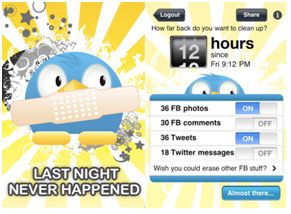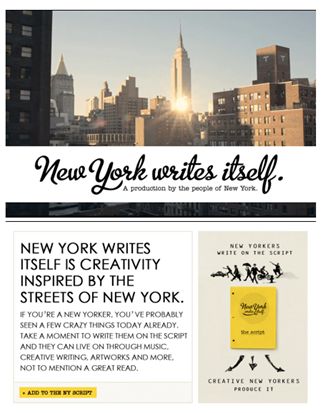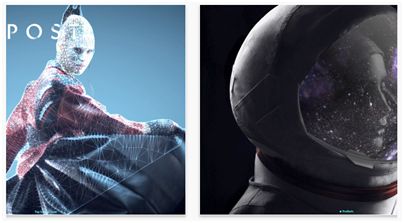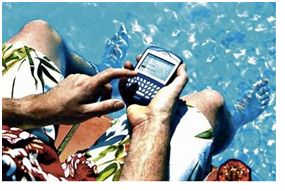![]()
You are welcome to share your thoughts on this article written by Greg Taylor, Director of Brand Provocation at Elmwood, London
One of the most famous book openings ever, from Charles Dickens’ A Tale of Two Cities, goes like this: “It was the best of times, it was the worst of times, it was the age of wisdom, it was the age of foolishness . . . we had everything before us, we had nothing before us . . .”.
Dickens goes on to say: “Daring burglaries by armed men, and highway robberies, took place in the capital itself every night; families were publicly cautioned not to go out of town without removing their furniture to upholsterers’ warehouses for security; the highwayman in the dark was a City tradesman in the light . . .”
Sound familiar? Certainly it does if you were in the UK early August! Two Cities is a story about politics and war and human nature at its best and worst. It was ever so, our lives are filled with good and bad things all the time. The challenge is how to progress. And in here in lies the dilemma. It’s not the fact that the world is changing, the world is always changing, but the pace of change makes it hard to know how best to progress. This uncertainty is fuelled more than anything else by the best and worst of technology. Our world is both analogue and digital. How they should interplay is unchartered, and the rules and mores established in the analogue world don’t necessarily hold true in the digital! This predicament is compounded by the speed of digital development. Mark Holden, global strategy chief for the media agency PHD, recently warned delegates at Cannes Festival that if the industry was having problems keeping pace with technology now, the situation was only going to get more difficult. «Change will never be this slow again,» he said. The digital revolution may well and truly be underway, but only time will tell if good will triumph over evil like it does in the movies.
Dangerous and embarrassing addictions
Technology has narcotic qualities if events in South Korea are to be believed, where internet addiction is recognised as a clinical condition. The BBC has reported the emergence of clinics to help addicts.
A patient at the Gongju National Hospital, where they undertake medical treatment, explains the appeal of online gaming. «Curiosity,» he says, «the fun, the thrill. When I play, I get immersed so much that it’s hard to distinguish the cyber world and the real world, sometimes it’s just hard to adapt to the real world.» This level of addiction led the South Korean parliament earlier this year to pass a new law to restrict internet use. Nicknamed the ‘Cinderella Law’, it will ban teenagers from playing online games after midnight. How effective policing this will be, well, who knows?
Closer to home, digital misbehaviour throws up a challenge of different kind – the one of the ‘morning after’ embarrassment of the drunken Facebook posting. But thanks to a new iPhone application, you can now delete embarrassing messages posted on social network sites like Facebook and Twitter. Called ‘Last Night Never Happened’, it automatically deletes all embarrassing social network messages over a set period by its user who posted them in a drunken state. In fact, it has been designed to save boozers the humiliation of trawling through status updates, tweets, photos, comments and messages uploaded while half-cut. Using the app is easy. You just enter the time you started boozing, and it quickly deletes all posts from your Facebook and Twitter accounts since that time, say its developers. Worth every penny, I say.
On a more serious note, digital’s ability to spread news instantly can have more violent consequences. So whilst Facebook was used to share information about the UK riots, according to the Guardian, the most powerful and up-to-the-minute rallying appears to have taken place on a more covert social network: BlackBerry Messenger (BBM). Using BlackBerry handsets – the smartphone of choice for the majority (37%) of British teens, according to the latest Ofcom study – BBM allows users to send one-to-many messages to their network of contacts, who are connected by BBM PINs. For many teens armed with a BlackBerry, BBM has replaced text messaging because it is free, instant and part of a much larger community than regular SMS. And unlike Twitter or Facebook, many BBM messages are untraceable by the authorities.
Digital does good
On the flip side, social media has been used as a force for good in the wake of riots. Twitter and Facebook have provided a platform for clean-up organisers and supporters to mobilise their operations and spread their message.
The Riotcleanup Twitter page has amassed over 87,000 followers and is constantly tweeting updates including clean-up locations and times, along with other information about the initiative. Twitter users are using the #riotcleanup hashtag to share their own experiences. A Facebook group was set up to collate information after the damage caused in London and has 18,000 followers, with similar groups for the different cities affected. Also, riotcleanup.co.uk has information about how to help and a list of locations, dates and times for upcoming clean-ups.
Another great example of how digital can mobilise people to bring out their best is New York Writes Itself — a brand new project about the city and its citizens.
NYWI seeks to capture the art that is everyday life in NYC and transform simple observations into something bigger. Scenes from NY life are captured in narrative form by “scribes” and added onto “the script”, which then fuels other creative endeavours (songs, films, videos, gallery exhibits etc.) These can be checked out at https://www.newyorkwritesitself.com/home.html
The capability to inspire
Digital we know is great at mobilizing people through a shared experience. However its ability to inspire us even more through its richer, more creative immersive capabilities are only just beginning to take shape. Just look at POST, the first independent magazine to be produced for the iPad platform. In the follow up to its launch issue POST Gravity opens with a groundbreaking, interactive 3D fashion story powered by infra-red technology in which users can distort, bend and flip the dimensions of model Iselin Steiro. A menswear story, The Man Who Fell To Earth by Jacob Sutton and Simon Foxton sees professional skydivers dressed in this season’s sharpest suits dance in the microgravity environment of a vertical wind tunnel, and Parisian super-store Colette select their Periodic Table of accessories for summer.
Other highlights include an exclusive film shot from the International Space Station recreating Yuri Gagarin’s maiden voyage through space, a lunar transmission of Beethoven’s Moonlight Sonata in Morse Code by Katie Paterson, Nicolas Provost’s transformation of Las Vegas into a shimmering jewel of a spaceship, a presentation on the dynamic between NASA’s designers and science fiction cinema, Todd Cole’s cinematic journey through the SpaceX hanger and a bespoke soundtrack by the celebrated sonic artist Scanner.
POST aims to take advantage of the platform’s unique strengths, using multimedia and the touchscreen interface to present an interactive experience. Each issue of the magazine is based around a single topic – in the first edition the theme is matter. Music echoing the issue’s theme plays as you read, and videos are embedded in the text. Pages highlighting products and accessories are presented as a ‘periodic table’. Readers can swipe images to rotate them and purchase products featured in the magazine with one touch. Published bi-monthly by MERI Media, Post magazine is priced at £1.79 for UK customers, $1.99 in the US and €2.39 in the EU.
The enigma goes on
Even those at the forefront of digital like POST’s founder Xerxes Cook are acutely aware of the enigma they face working with new technology. The daddy of media analysis, Marshal McLuhan, observed that, “we shape our tools and our tools shape us”. This still resonates with Cook today, “the iPad itself has created a new medium for communication, one that combines text, imagery, film and the interactivity of a computer game, and it’s going to be fascinating to see how it is going to shape us.”
So as summer draws to a close and many us return from our holidays we may wish to saviour the occasion. Because if the FT’s Lucy Kellaway idea takes hold, holidays may well be a thing of the past. Lucy considers that arrival of smartphones, laptops and mobile internet has fundamentally changed the way people take holidays and has coined a word to describe them: «worliday». She explains that a worliday is a bit like holiday and a bit like work. It’s the future for most professional workers. And actually, contrary to what most people would have you believe, a worliday is really rather nice.
Lucy rather provocatively suggests that the mass adoption of the worliday doesn’t mean everyone ought to be given longer holiday entitlements. Instead, we should adopt Netflix ‘famously groovy’ culture, where employees are allowed to take whatever holiday they feel like taking — no-one keeps records.
As ever, there’s always a yang to the ying and the future principles of how to use digital in our life’s for better or worse is still be played out. Looking on the bright side, we can but hope for something akin to Two Cities’ ending passage. «It is a far, far better thing that I do, than I have ever done; it is a far, far better rest that I go to than I have ever known.»
About the Author

Greg Taylor became founding partner in global brand design consultancy Elmwood in 1989. Now Director of Brand Provocation, Greg is the creator and facilitator of Step Change™, Elmwood’s strategic tool for moving ideas forward. Clients include ASDA, Wal-Mart, Arla Foods, BBC, COI (Defra and DfT), Cable&Wireless, Comic Relief, Debbie & Andrew’s, Durex, Glasgow 2014 Commonwealth Games, McCain, and the Met Office.






